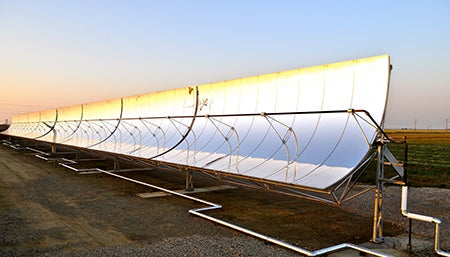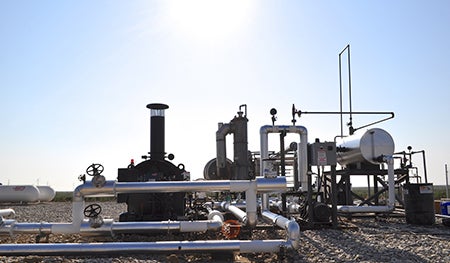 EDF’s Energy Innovation Series highlights innovations across a broad range of energy categories, including smart grid and renewable energy technologies, energy efficiency financing and progressive utilities, to name a few. This Series helps illustrate that cost-effective, clean energy solutions are available now and imperative to lowering our dependence on fossil fuels.
EDF’s Energy Innovation Series highlights innovations across a broad range of energy categories, including smart grid and renewable energy technologies, energy efficiency financing and progressive utilities, to name a few. This Series helps illustrate that cost-effective, clean energy solutions are available now and imperative to lowering our dependence on fossil fuels.
Find more information on this featured innovation here.
WaterFX can turn virtually any water source into clean, drinkable water. And all they need is a sunny day.
This is great news for drought-stricken states like California and Texas, where water is becoming an increasingly scarce resource. In Central California, for example, the drought has essentially cut off thousands of farmers this year; they have no water, and their land now lays fallow.
Part of what’s draining this precious resource is our energy use. Taking into account the acquisition, treatment, and movement required to ensure water comes out the faucet when we turn it on, it is no surprise that water is among the country’s greatest users of electricity.
Energy and water go hand-in-hand, yet we don’t fully understand our holistic energy-water footprint. If we start thinking about clean energy and water together, we can quickly advance a sustainable future for both of these vital resources, uncover joint cost-savings, and provide people dependability during the driest, most drought-stricken of times.
A company called WaterFX is addressing both our energy and water woes through its unique water treatment system that can generate fresh water from virtually any water source. It runs essentially fossil fuel-free and can be installed just about anywhere. Best of all, its founder wants everyone to copy his innovation, free of charge.
“Our approach is worth copying,” said WaterFX founder and chairman, Aaron Mandell. “The technology that our company is built upon is one that can be replicated anywhere, by anyone, and that could be a game changer for arid regions around the world. It is a vaccine for water scarcity.”
The company calls its Aqua4 system an “engineered aquifer.” It uses concentrated solar still (CSS) technology to evaporate and distill water from any treatable source – from seawater to agricultural discharge – by removing salt and other impurities as an on-site fresh water solution. The system can also store and recycle the excess heat energy it generates, enabling the CSS to run 24/7. Only during prolonged cloudy stretches would the system need to rely on other fuel sources.
“We can provide a turnkey water solution for cities, agricultural districts, and other large-scale water customers that offers long-term cost predictability without requiring them to bear all the upfront costs of new technology,” Mandell said. “They’ll buy our water just like they would from any other provider. It’s the Solar City model for water – why own the solar equipment when you can just get lower cost water.” The comparison to Solar City is quite intriguing when you consider that net metering of solar energy now enables electric meters to run in reverse, putting excess power back on the grid. The same principles can apply to water.
Mandell says one Aqua4 module can generate 65,000 gallons of freshwater a day from wastewater, drainage water, runoff, saline groundwater, industrial process water, or seawater. Because the system is modular, it is easily scalable. Double the modules on-site and you double the freshwater output.
Aqua4 is being put to the test in Central California’s agricultural region, where a scaled-down module is turning 14,000 gallons of agricultural discharge into fresh drinking water each day. That water can then be returned to rivers or recycled back into the agricultural or municipal water supply.
Perhaps the most remarkable aspect of the company is its open source approach. It sees its growth in the service industry as a water provider, owning and running the systems on-site and simply selling the reclaimed water to the buyer. So it’s not patenting its innovations.
Mandell sees a significant advantage to the open source approach. “Technology is an important part of what we’re doing, but not the only part,” he said. “There are countless smart people around the world that will make this technology even better. And when they do, our service will become stronger and everyone will benefit.”











